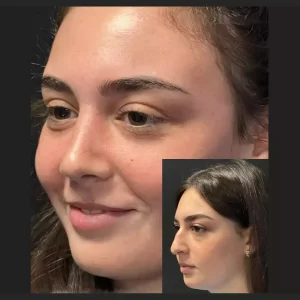Uterine fibroids are benign tumors of smooth muscle origin that can be asymptomatic. They can even inflict heavy menstrual bleeding, pelvic pain, or pressure. Myomectomy—a surgery that removes fibroids but leaves the uterus intact—is helpful and makes conceiving easier for a lot of women. There is, however, the question of the reoccurrence of the fibroid after surgery has been done. It is important for the women who are likely to opt for this treatment to know the frequency at which the fibroids come back into their body and the aspects that determine this.
Recurrence Rates After Myomectomy
Studies show that there is variability in the outcome of fibroid after myomectomy. The data shows that about 0.5 to one percent of women might experience regrowth within five years after the surgery. More specifically, some literature prescribes recurrence rates of up to 50% to 60% within ten years. The variation of myoma in size depends on various factors, such as whether a laparoscopic or open myomectomy was done, how many fibers were removed, and other patient-related factors.
Suggest to read :- Right Ovary Dominance: Understanding Follicle Development
Factors Influencing Recurrence
Type of Myomectomy:
- Laparoscopic Myomectomy (LM): This marginal surgery has been seen to be linked with a higher recurrence rate when compared to OM. Certain research states that they have documented fresh occurrences with an aggregate recurrence rate of 76% within eight years of LM.
- Open myomectomy (OM) usually results in lower rates of relapse because there is more complete excision of fibroids, including the smaller ones that may go unnoticed during laparoscopic surgery.
Age:
With reference to age, younger women that are below the age of 40 are likely to experience recurrences. This is often associated with increased hormonal levels and the number of tumors being greater.
Hormonal Factors:
Fibroid development is strongly related to some hormones like estrogen and progesterone. Women with hormonal imbalances may also discover that fibroids regrow more rapidly after surgery.
Number and Size of Fibroids:
Those who had more than one or bigger fibroids operated upon have a higher tendency for new fibroid formation compared to those who have small or one fibroid.
Surgical Technique:
The recurrence rates are closely related to the extent of the operation in the primary cancer treatment stage. Ungrounded or residual fibroids may also develop into a bigger issue when left behind throughout a surgical operation.
Timeline for Recurrence
There is no specific period that one can determine that his or her fibroids are likely to begin to regrow. That means that some women may experience the above symptoms as early as two years after the surgery. But evidence shows that there is relapse in seventy-five percent of the women within five to ten years on average after myomectomy.
For example, approximately 12% of patients may need reoperation before seven years after surgery because of recurrent symptoms associated with new or recurrent fibroids.
Symptoms of Recurrence
Women should be vigilant for signs that may indicate the return of fibroids, including:
- Heavy menstrual bleeding
- Pelvic pain or pressure
- Frequent urination
- Pain during intercourse
Conclusion
Myomectomy directly removes fibroids and will ease symptoms but does not eliminate a woman from ever developing new fibroids again. Knowledge of factors affecting recurrence rates and continuing close postoperative management are vital to these women. It is therefore really significant for those with gynecology conditions planning for this specific surgical procedure to have expert doctors in accredited health facilities that particularly handle gynecology surgeries so that they may receive proper care post-surgery and, in the long run, maintain a healthy uterus.
For those women who are looking for treatment options in Delhi, consult Sehgal Nursing Home, which is the best hospital for fibroid surgery in Delhi.
FAQs
Is it normal to have a dominant follicle on the right ovary?
Having a dominant follicle on the right ovary is normal and part of the menstrual cycle. Each month, one follicle matures faster than others, preparing for ovulation.
Can you get pregnant with one dominant follicle?
Yes, you can get pregnant with one dominant follicle. If it successfully releases a mature egg during ovulation, fertilization can occur if sperm is present.






